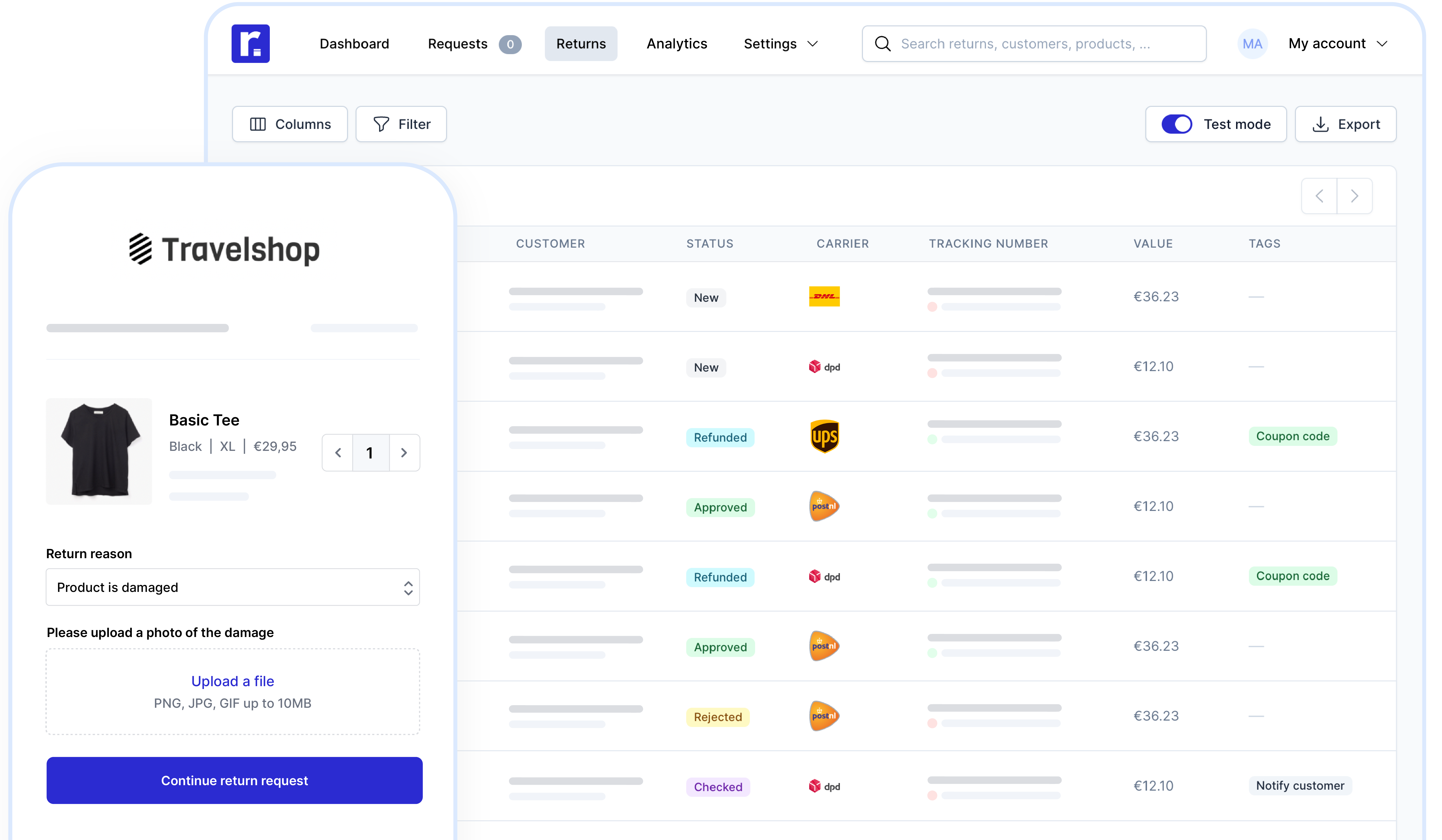
Author
Maxine Alders
Date
December 9, 2024
Category
Informative
In 2025, a streamlined returns process remains essential to a successful e-commerce strategy. Consumers expect not only an easy process, but also value sustainability and customization. Innovations such as automation and data analytics are changing the way webshops handle returns. Here are the latest insights.
Automation in the return process
The returns process offers tremendous opportunities for automation, eliminating repetitive steps and making everything more efficient. Consider, for example, automatic notifications that keep customers informed of return status, or systems that initiate instant refunds once the warehouse has checked the return.
This automation speeds up the process, reduces the chance of human error and saves time and costs. It also leads to higher customer satisfaction by providing customers with better and faster information.
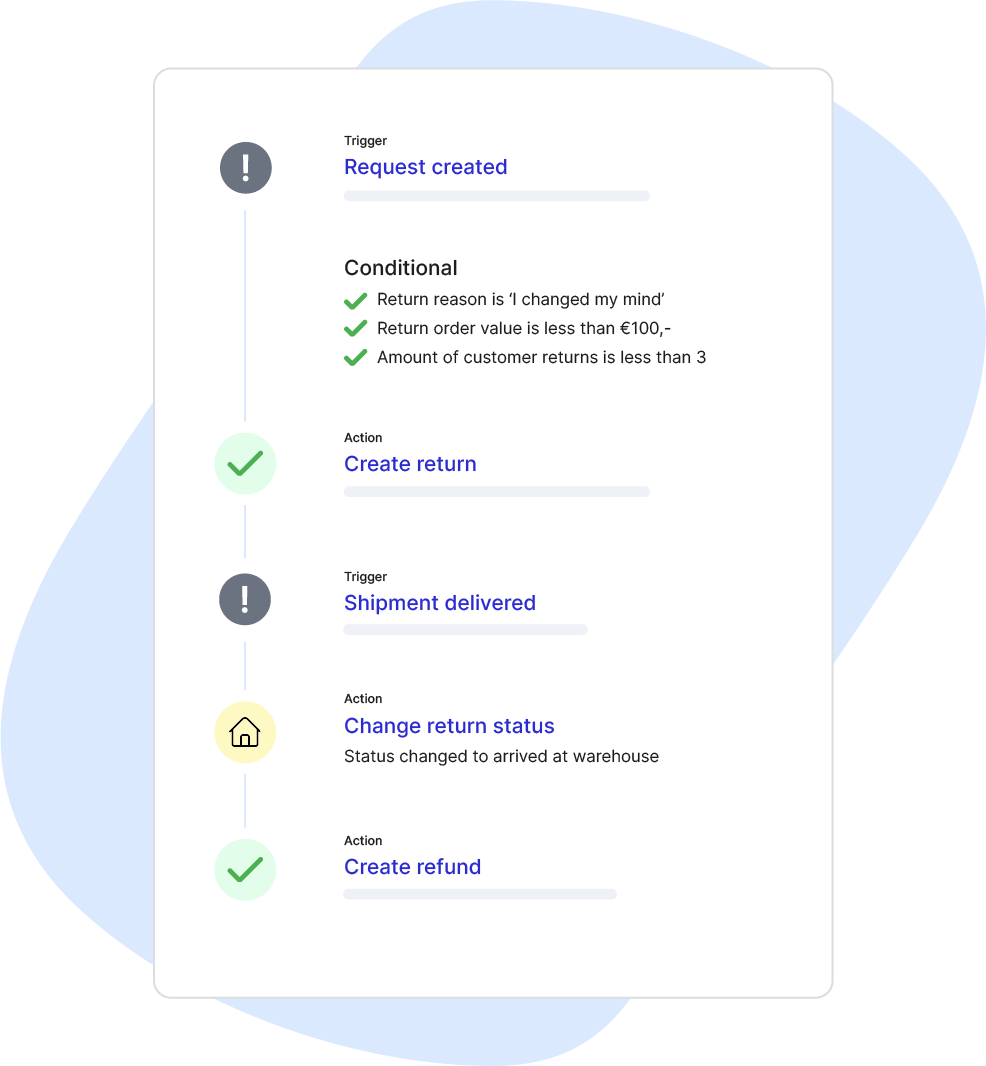
Fear of impersonality? No worries. Instead, use automation to handle simple and repetitive questions, while more complex issues are referred directly to a human employee. You'll soon see that by doing this, you'll be capturing the bulk of your return issues, and only dealing with a few special situations in person.
Advanced data visualization and process optimization
Data analytics identify recurring reasons for returns, such as product dimensions or quality issues. With these insights, you can improve product information, offer better advice and encourage more conscious purchases. This leads to fewer returns.
While product data analytics are incredibly valuable, you can also use returns data in other ways. For example, by partnering with a returns platform that digitally manages returns, you also gain access to valuable data that helps with process optimization. For example, you can predict return volumes, see how long it takes for packages to return to the warehouse, and analyze team performance.
With these insights, you can identify bottlenecks and automate standard return steps. This lowers returns costs, makes the process more efficient and reinforces the reliability of your returns policy.
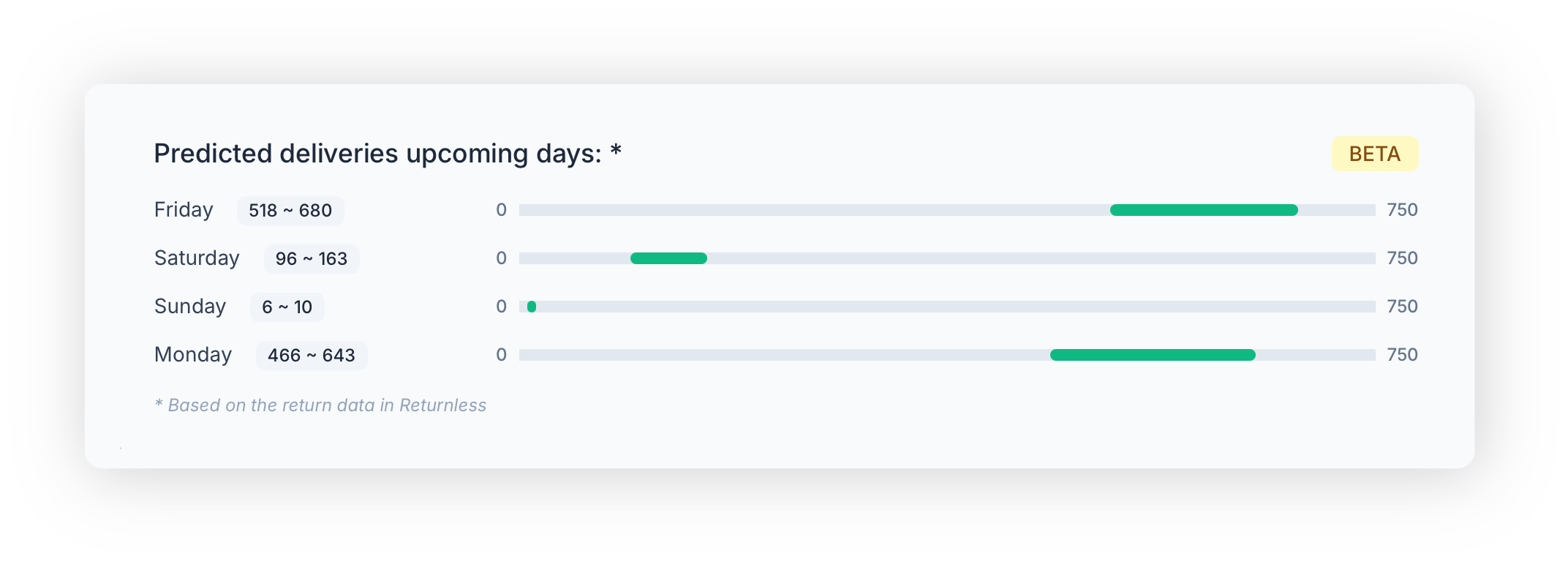
Returns, repairs and warranties as a sustainable opportunity
Repairs and warranties are often handled separately from returns, but integrating these processes into an overarching returns flow offers many benefits. By including repair and warranty opportunities within your returns process, customers can have damage or defect repairs or claim warranties through the same portal, making the process, not only for the customer but also for you, a lot more manageable.
Repairs offer a more sustainable alternative to replacement and extend the life of products. This not only increases customer satisfaction, but also contributes to positive brand perception and less waste.
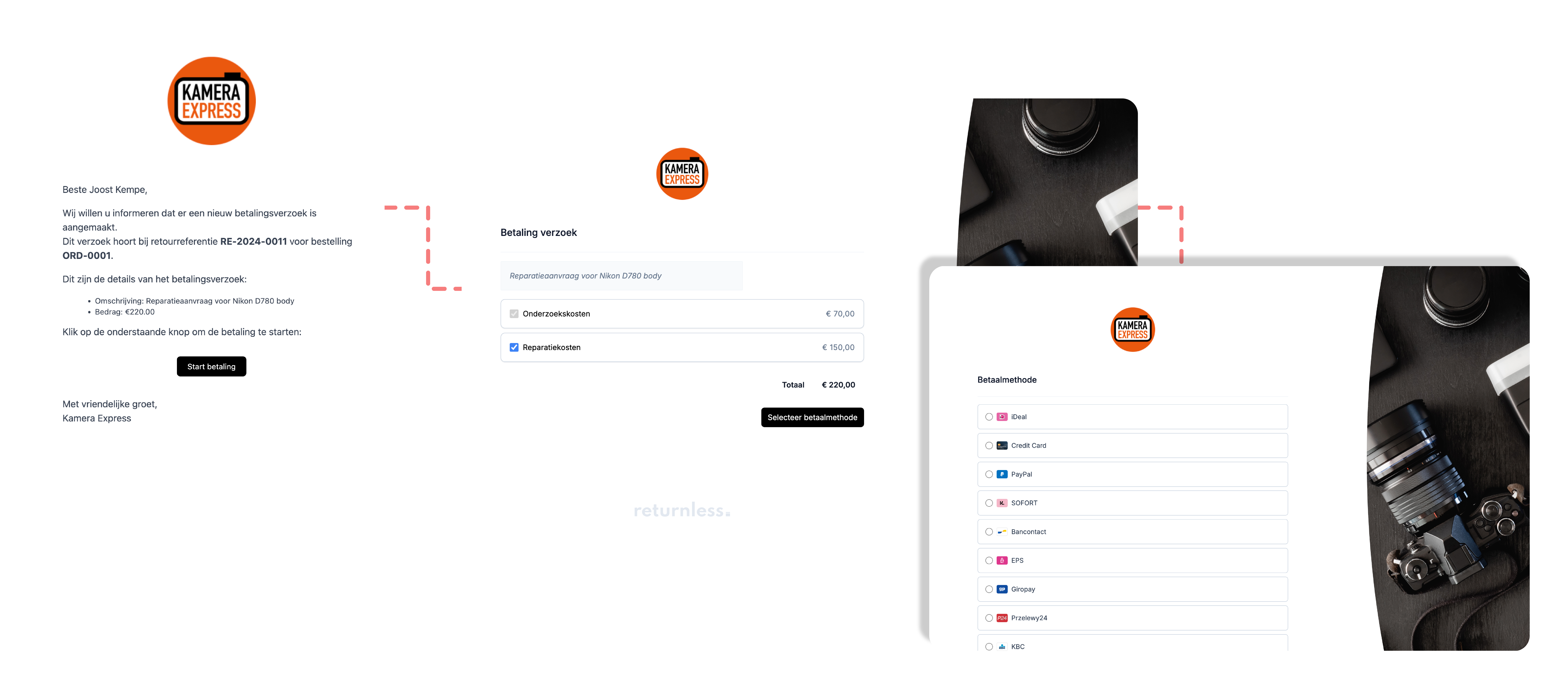
Flexible return options for customers
By offering different shipping and return options, you give customers the freedom to choose the method that best suits their situation.
For example, consider offering printerless labels, but also offering multiple carriers to. In fact, for some consumers certain carriers may be difficult to reach within their location. In that case, the option to choose another carrier, although they may involve higher shipping costs, may be preferable because they offer the customer a better experience by being closer or more flexible. This not only increases customer satisfaction, but also makes the return process easier and faster for the consumer.
Do you have physical stores? Then offering in-store returns can be a valuable option, where customers can return products in a physical store for free. This saves both the online store and the consumer unnecessary shipping costs, and increases your chances of a direct exchange or new purchase in-store.
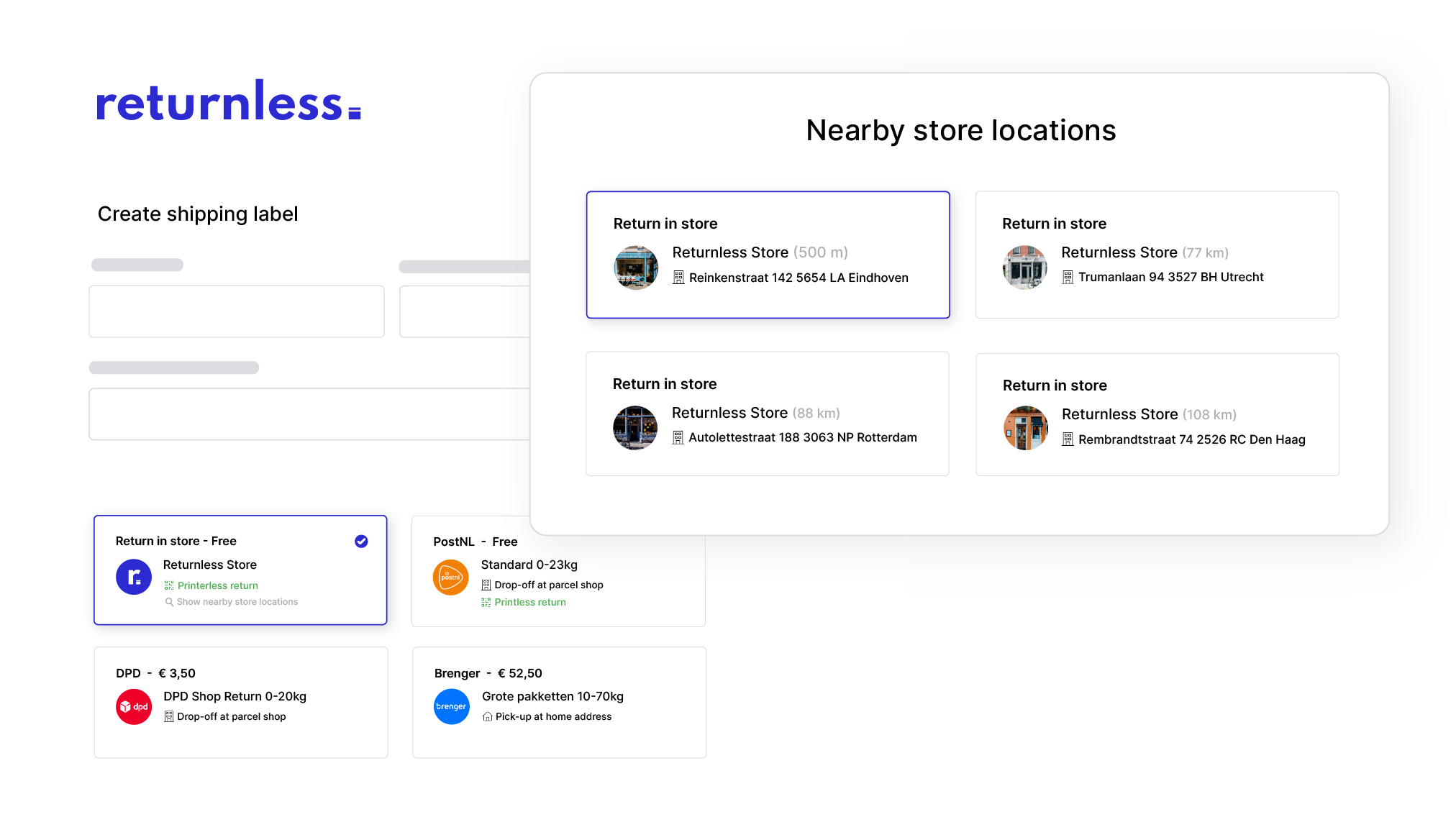
Paid returns: a new balance
With rising return numbers and increasingly strict sustainability policies, implementing return fees is a trend we've been observing within e-commerce for a while now. With paid returns, the customer pays a return shipping fee. Large e-commerce players such as Wehkamp, H&M and Zara are already experimenting with this model. There are several variants:
- Fixed return fee: Customers pay a standard amount for returns.
- Hybrid model: Loyal customers or customers with a legitimate reason, such as a damaged product, are exempt from fees.
- Return charge per item: The more items a customer returns, the higher the surcharge.
This approach encourages conscious purchasing and helps reduce high return rates. It also provides room to reward customers for loyalty or responsible buying behavior. Many merchants still find it exciting to implement paid returns, fearing fewer sales. Introduce paid returns gradually and communicate this clearly. Combine this with benefits for loyal customers, such as free returns for frequent shoppers or exceptions for damaged items. Research shows that consumers increasingly understand the introduction of paid returns.
Returnless: your partner in return optimization
For a future-proof and innovative returns process, a returns platform like Returnless offers all the tools needed. From advanced automation and data visualization to implementing repair, warranty flows and payment models: Returnless supports your webshop in creating a seamless and efficient returns process.
Have we piqued your interest? Schedule a free demo right away or get started yourself with a free test account.
get started for free.
Play around and test out all features for free. Or schedule a demo with one of our colleagues if you'd like more info first.
